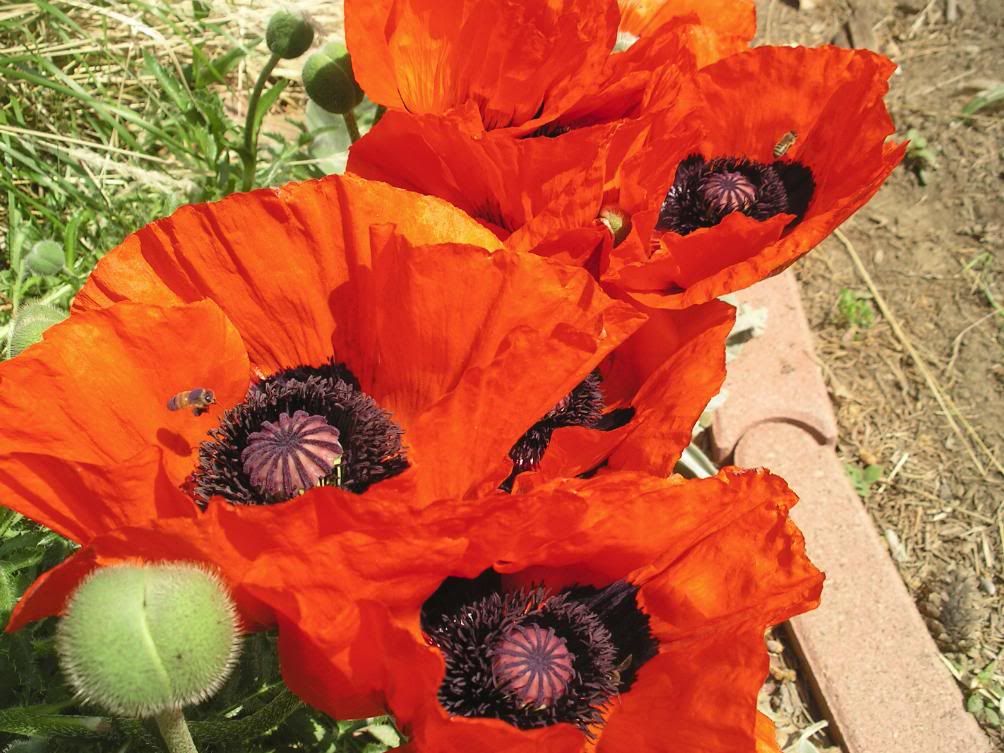
Bees on my Poppies on this June Morning Here in Boulder
When I walked into my garden this morning it was ablaze with eight open poppies and swarming bees. What a beautiful sight. Poppies are one of my favorite flowers and I moved this plant with me from Lincoln, Nebraska to Boulder, Colorado three years ago. They apparently love our rich volcanic alluvial soil and the weather here, as they're spreading nicely.As for bees, Carol Kearns, a University of Colorado bee expert, says that we have 551 species of bees here in Boulder county.
... some will only use plants of a particular genus while others are more generalists. They all have different tongue lengths and so a variety of natives will support the most diverse group of bees. It is important to have a succession of flowers blooming over the course of the summer (which is one of the reasons why agricultural fields often don't get as many native pollinators as you would expect - if the flowers bloom over a few weeks and then there are no more). Also, many showy ornamental, non-native plants have been bred specifically for their showiness and have lost nectar volume, or don't produce nectar at all anymore.Dr. Kearns did a five-year study completed in 2006 which compared bee populations in our county to a 1907 study. It concluded that our open space preservation of vast amounts of grasslands has led to the preservation of 110 out of 116 grasslands bee species seen in the 1907 study. "We conclude that the bees of the grasslands of Boulder County have been largely conserved, and we hypothesize that the large amount of preserved habitat in the county has contributed to maintaining the insects."
Unfortunately for the bees, we've decimated 98% of our Great Plains grasslands in this country through our land use policy which devotes most productive land to farming, and our farm policy encourages maximizing farmland areas for monoculture production.
Here in Boulder County, we also have nationally renown long-time beekeeper and resident expert Tom Theobold, who issued a press release late last year about clothianidin's role in the demise of bees, "Wik-Bee Leaks: EPA Document Shows It Knowingly Allowed Pesticide That Kills Honey Bees." If you are not familiar with this report, I encourage you to read it.
My coffee klatch "Sister Bee" film-maker, beekeeper, and artist friend, Laura Tyler, works with Tom and will eventually be producing a movie related to Tom's garden. She reminds us often that bees love "weeds" and dandelions, they need them, in fact.
How are the bee populations doing in your area? Are people in your community planting nectar shrubs, pollinator gardens or pollen restoration areas?
K. McDonald
(Note that in my photo two bees are evident but there were about a dozen swarming the flowers. Also note how huge the flowers are, by using the bees as your scale.)